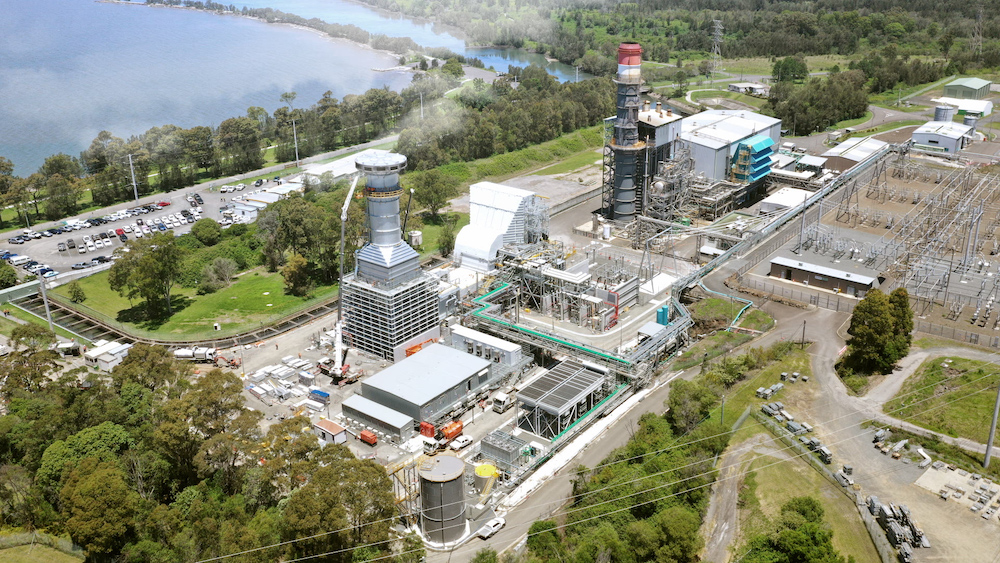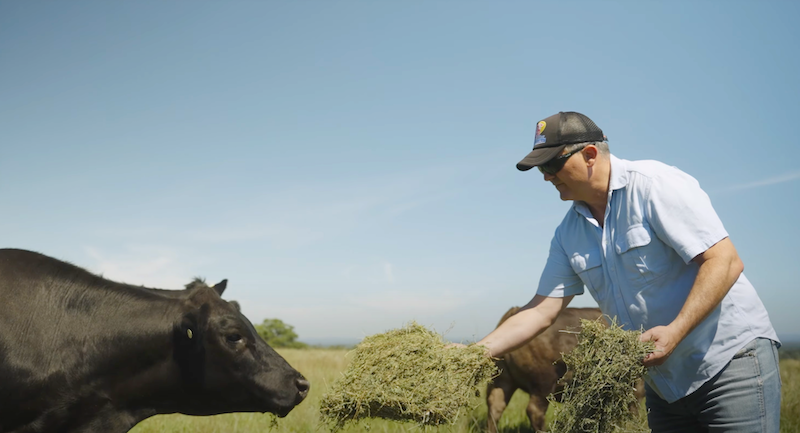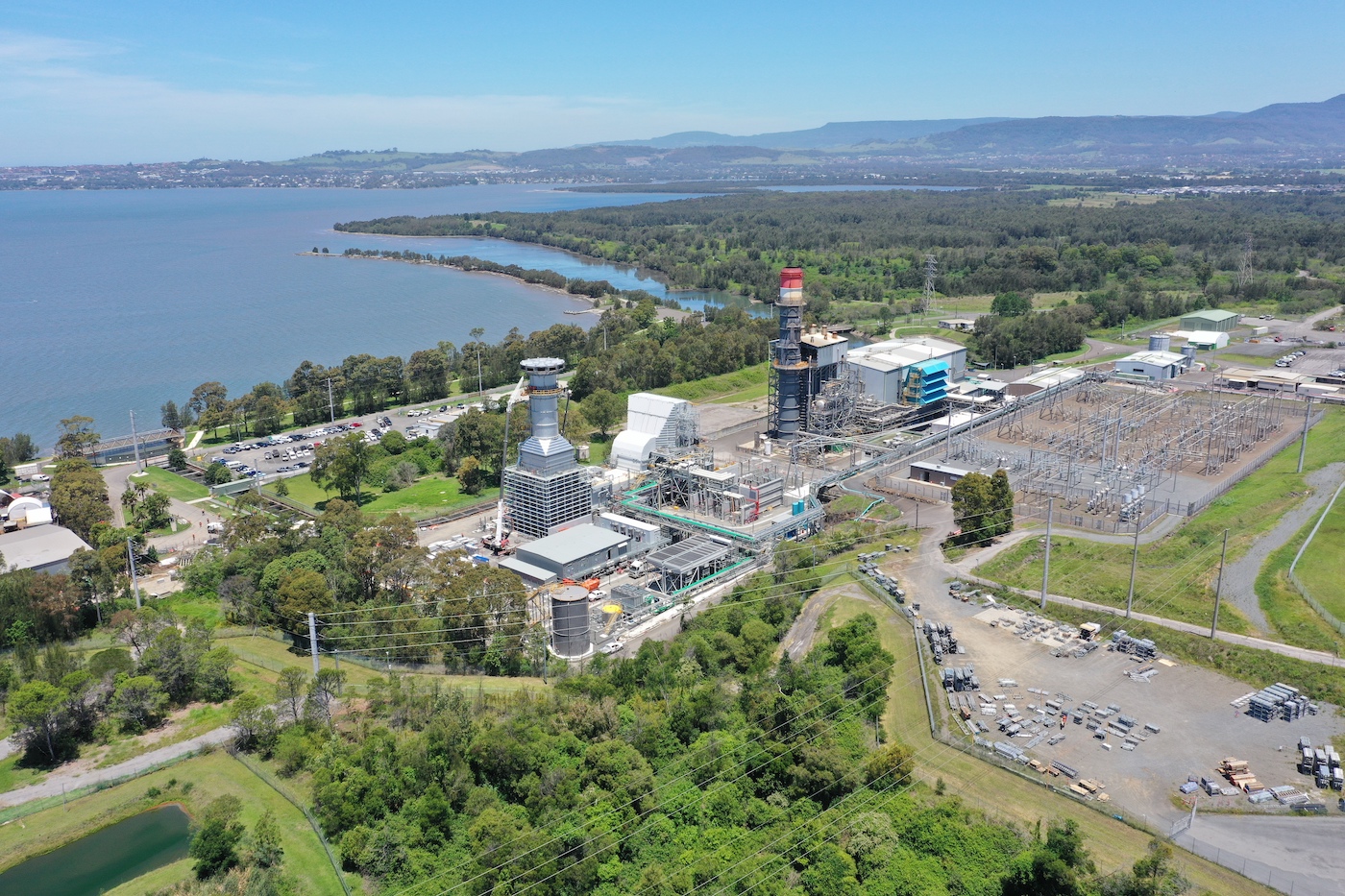Less than a year ago, GE Reports brought you the story of some of the people working to build the Tallawarra B power station, north of Sydney, Australia. This week, EnergyAustralia announced the opening of Tallawarra B, which is the first dual-fuel gas-and-hydrogen power plant in Australia. It will add as much as 320 megawatts (MW) to the grid, enough to power the equivalent of about 150,000 Australian homes.
“Tallawarra B demonstrates the substantive role that gas technologies can play in reducing carbon emissions, ensuring reliable electrical supply and fighting climate change,” says Ramesh Singaram, president and CEO of GE Vernova Gas Power for Asia.
In April, EnergyAustralia will also begin an upgrade and overhaul of its Tallawarra A station to increase the capacity and efficiency of the station from 440 MW to 480 MW and enable the use of up to 37% hydrogen as a fuel when green hydrogen becomes more commercially available.
Hydrogen is a transformative fuel in the energy transition, and it is gaining momentum down under. Just last month, GE Vernova’s Gas Power business secured an order from CS Energy in neighboring Queensland for 12 LM2500XPRESS aeroderivative gas turbines for a new power station being installed west of Brisbane. Those turbines will be capable of operating initially on 35% hydrogen when they begin operation, planned for 2026.
Please see the May 2023 feature below on Michael Knez and his crew as they worked to bring Tallawarra B to life.

Few people know more about the electrons they use to power their day-to-day life than Michael Knez. Often up before dawn when all else is silent, Knez says he can hear the hum coming from Australia’s Tallawarra Power Station, four kilometers away across Lake Illawarra from his house, which Knez helped build some 14 years ago. A massive combined-cycle gas-fired power plant, Tallawarra produces enough electricity to supply the equivalent of roughly 200,000 Australian homes with substantially lower carbon emissions than the coal-fired plant it replaced.
Hydrogen stands to potentially transform how gas-fired facilities work in the near future — a potentially lower-carbon source of energy that may in time become Australia’s fuel of choice in the race against climate change. Now Knez is back at Tallawarra, helping oversee construction of another power station that, when completed, is planned to have the potential to burn hydrogen created using solar or wind power. His role in the new plant comes with an added benefit: He’s taking a star turn in a new documentary film called “Powering Tomorrow,” from GE Vernova, that delves into Australia’s decarbonization plans, particularly for transportation and power generation.
The film, shot on location throughout eastern Australia, features Knez as well as Emily Coe, a young truck driver, and Stuart Walsh, a senior lecturer in the civil engineering department at Monash University. The film is part of a series covering the energy transition in countries as diverse as Norway and Vietnam at a time when both developed and developing nations have committed to reducing their emissions and must now grapple with the economic, political, and infrastructure changes needed to accomplish that.
Tallawarra B, as the new station is known, sits about 60 miles (100 kilometers) south of Sydney and is part of Australia’s ambitious plan to turn its sun-soaked, windy expanses into hydrogen fuel that can be burned in power turbines ordinarily fired by natural gas and even exported to energy-thirsty Asian countries that lack the space, wind, or sun for massive wind and solar farms.

For Knez, being part of the film was a chance to show his three teenagers what their dad does for a living. An industrial chemist by training who has worked on the construction of everything from dams to water treatment plants, schools, jails, and roads, Knez is now the environmental, health, and safety manager for GE’s Gas Power business at Tallawarra B. His job is to ensure compliance with complex rules and permits governing waste disposal and worker safety, among others, something his children can’t always grasp.
“I showed them all the film and they were all gobsmacked, like ‘Wow, is that what you do?’” says Knez, who worked with a crew of filmmakers for three days to get the approximately three minutes of footage of him that went into the final film. “One of the reasons I did it was I wanted to leave a little bit of a legacy for the kids.”
The film follows Knez, Walsh, and Coe as they each discuss Australia’s transition from fossil fuels to renewables. Filmmakers joined Knez at Tallawarra’s football-field-size construction site as he met with colleagues and visitors. Knez says a big challenge for him is to keep a crowded location, where humans and machines mix, a safe one, and so far he has, something he’s proud of. Walsh helps provide the context of the energy transition in Australia, given its geographical layout and the effects the country is seeing from climate change. Coe tells viewers about her choice to become a trucker, a traditionally male-dominated field, and muses about someday fueling her rig with hydrogen.
Knez joined the Tallawarra B project both for a chance to revisit a prior accomplishment as well as to work on the future of energy near his home. The 316-megawatt station will initially be able to burn around 5% hydrogen when blended with natural gas and will be Australia’s first hydrogen-capable “peaker” gas plant. Those are fast-response power plants that help to smooth the troughs and peaks in supply that intermittent sources like solar and wind create on the grid.
“With the dramatic increase in renewables that we’ve had in Australia, the role of gas turbines has shifted significantly,” says Aaron Scott, country leader for GE Gas Power overseeing Australia and New Zealand. “It’s becoming more and more important to provide renewables firming, which basically means dispatchable, reliable generation when the renewables are not available, when the sun’s not shining or the wind is not blowing.”
At its heart, Tallawarra B will have an advanced GE 9F.05 gas turbine. GE’s F-class fleet has more than 24 million operating hours across 40 countries, but Tallawarra’s will be the first 9F turbine to run on a hydrogen fuel blend. Currently, it has the capability to burn up to 18% hydrogen. GE has a plan for 9Fs to burn 100% hydrogen by the early 2030s. The company has built other turbines, more than 120 so far, that have already racked up more than 8.5 million operating hours running on hydrogen or hydrogen-derived fuels. Both Australia’s federal government and the state of New South Wales, where the power plant is located, contributed funding, essentially hoping to spur demand for hydrogen sources that have yet to be built.
“There is growing interest in multiple Asian countries in using hydrogen or hydrogen-derived fuels as a key element in their respective decarbonization road maps. However, they will need someone to supply the hydrogen. With their abundant renewable resources, Australia wants to be the hydrogen supply depot to meet this potential demand,” says Jeff Goldmeer, emerging technologies director at GE Gas Power. “But to do it, they have to anchor their own demand to start creating a new hydrogen supply chain.”
Knez also understands the importance of caring for the landscape he calls home. With his extended family, he inherited stewardship of his father-in-law’s nearby farm, a menagerie of animals and plants that is demanding to manage but has rewarded him with a weekend refuge his kids go mad for.
“It takes a lot of effort, but we’re sharing it amongst the family, so everyone’s putting their little bit in because they all want to keep it,” Knez says. “It’s something that we really, really cherish.”
